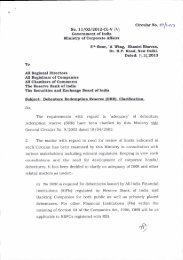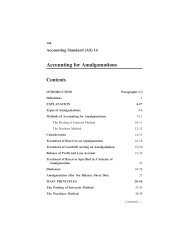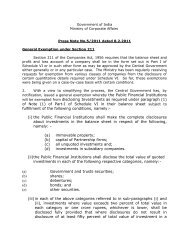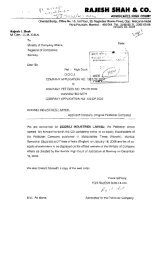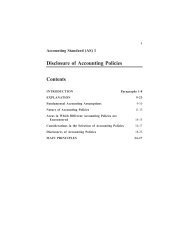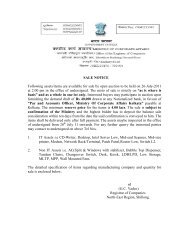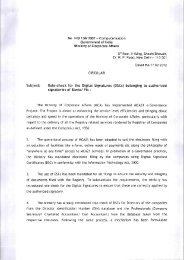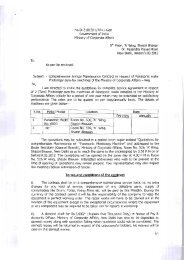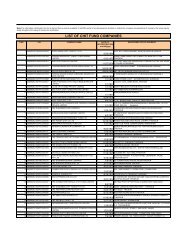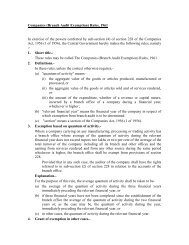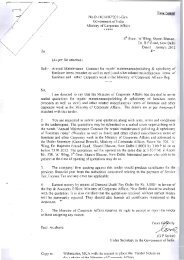Accounting Standard 2; Valuation of Inventories
Accounting Standard 2; Valuation of Inventories
Accounting Standard 2; Valuation of Inventories
Create successful ePaper yourself
Turn your PDF publications into a flip-book with our unique Google optimized e-Paper software.
their present location and condition.<br />
Costs <strong>of</strong> Purchase<br />
<strong>Valuation</strong> <strong>of</strong> <strong>Inventories</strong> 11<br />
7. The costs <strong>of</strong> purchase consist <strong>of</strong> the purchase price including duties and<br />
taxes (other than those subsequently recoverable by the enterprise from the<br />
taxing authorities), freight inwards and other expenditure directly attributable<br />
to the acquisition. Trade discounts, rebates, duty drawbacks and other similar<br />
items are deducted in determining the costs <strong>of</strong> purchase.<br />
Costs <strong>of</strong> Conversion<br />
8. The costs <strong>of</strong> conversion <strong>of</strong> inventories include costs directly related to the<br />
units <strong>of</strong> production, such as direct labour. They also include a systematic allocation<br />
<strong>of</strong> fixed and variable production overheads that are incurred in converting<br />
materials into finished goods. Fixed production overheads are those<br />
indirect costs <strong>of</strong> production that remain relatively constant regardless <strong>of</strong> the<br />
volume <strong>of</strong> production, such as depreciation and maintenance <strong>of</strong> factory<br />
buildings and the cost <strong>of</strong> factory management and administration. Variable<br />
production overheads are those indirect costs <strong>of</strong> production that vary directly,<br />
or nearly directly, with the volume <strong>of</strong> production, such as indirect materials<br />
9. The allocation <strong>of</strong> fixed production overheads for the purpose <strong>of</strong> their<br />
inclusion in the costs <strong>of</strong> conversion is based on the normal capacity <strong>of</strong> the<br />
production facilities. Normal capacity is the production expected to be<br />
achieved on an average over a number <strong>of</strong> periods or seasons under normal<br />
circumstances, taking into account the loss <strong>of</strong> capacity resulting from planned<br />
maintenance. The actual level <strong>of</strong> production may be used if it approximates<br />
normal capacity. The amount <strong>of</strong> fixed production overheads allocated to<br />
each unit <strong>of</strong> production is not increased as a consequence <strong>of</strong> low production<br />
or idle plant. Unallocated overheads are recognised as an expense in the<br />
period in which they are incurred. In periods <strong>of</strong> abnormally high production,<br />
the amount <strong>of</strong> fixed production overheads allocated to each unit <strong>of</strong> production<br />
is decreased so that inventories are not measured above cost. Variable<br />
production overheads are assigned to each unit <strong>of</strong> production on the basis <strong>of</strong><br />
the actual use <strong>of</strong> the production facilities.<br />
10. A production process may result in morethanoneproductbeing produced<br />
simultaneously. This is the case, for example, when joint products are produced<br />
or when there is a main product and a by-product. When the costs <strong>of</strong><br />
conversion <strong>of</strong> each product are not separately identifiable, they are allocated<br />
between the products on a rational and consistent basis. The allocation may<br />
be based, for example, on the relative sales value <strong>of</strong> each product either at



